
I intend to write a series (of which this is the first) on how punishment has now infected the totality of life under advanced capitalism in the West.
Last blog post I commented on the idea of how culturally it is ever harder for today’s populace to imagine a world without capitalism, and how advanced corporate neo liberalism had essentially negated the avant garde. Coupled to this was the idea that Capitalism was linked directly with, even predicated upon an idea of punishment as the responsibility, even duty, of the state.
If one starts to dig a bit deeper into notions of punishment, you discover the ways in which almost all of modern life is mediated by punishment, and categories of innocence and guilt. And mostly, that means guilt. For in the popular representation of life, innocence is something already lost. Couple this to the increase in surveillance, and suddenly, in concrete terms, everyone is guilty. Some just avoid punishment, often for very capricious reasons, often because of their privilege.
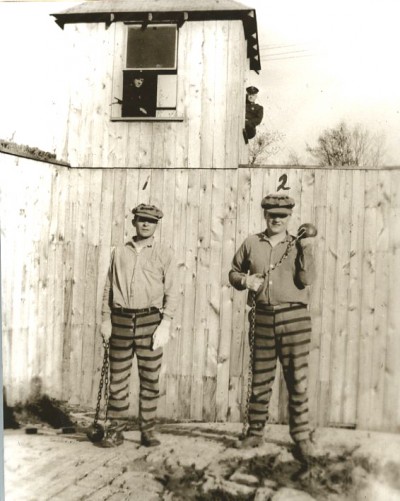
Now, the modern landscape is increasingly being defined as a war zone. The neo-imperialist war agenda of the U.S. has been in play since WW2. Humanitarian intervention morphed into a solid ideological construct defined by “Responsiblity to Protect” (R2P). This is the post Clinton interventionist creed embraced by both Bush, and even more by Obama (who has staffed his administration with loyal believers in war such as Samantha Power and Susan Rice). Now, the war on terror has migrated to the domestic landscape. The very naming of Homeland Security foreshadowed this inevitability. Modern life takes place against a backdrop of both war zone and prison (in all its manifestations, which always include partitioning off the guilty, literally and symbolically). The NSA and PRISM revelations have brought to light (probably with the full approval of the state) the level of surveillance and invasion of privacy the government participates in, and orchestrates. The vast U.S. carceral apparatus is now the largest in the world, with more people under custodial supervision than probably ever before in modern life.
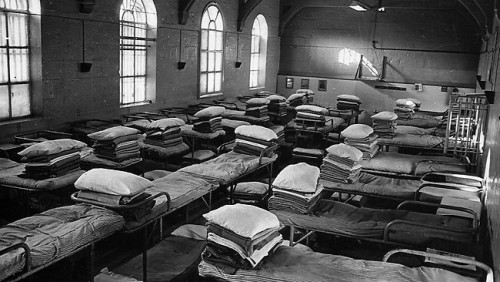
How does this mediate daily life, exactly? How does it enclose narrative, language itself, and image production? These are real questions that often seem indifferent to much of the left. One question has to do with shifts in the direction of University studies. The role of education cannot be separated from any discussion of this societal emphasis on punishment and guilt. There are genuine philosophical questions attached to how the Academy functions in relation to its economics and also to its theoretical assumptions for even existing. Heidegger wrote trenchantly about the evolution of learning in the University.
“The areas of the sciences lie
far apart. The ways they treat their subject matter are fundamentally
different. This disintegrated multiplicity of the disciplines is only held
together today by the technical organization of the universities and its
faculties and only retains some meaning because of the practical purposes
set for the departments. However, the roots of the sciences in their
essential ground have died.”
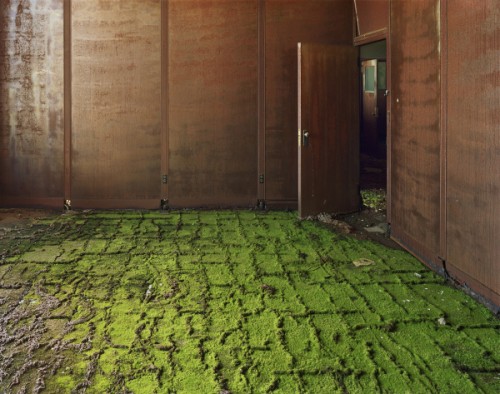
I believe it is important to recognize the vast unknown effects of technology, and the specialized research of Universities, today. The corporate state simply subcontracts Universities to do research directed toward profit. There is nothing in higher education that is not infected with nationalist militarism and political totalitarian principles.
“There have been indeed numerous university researchers and administrators who, for more than a century, have participated in the transformation of this cosmopolis into a political and military arm of their respective national government. What makes this problem more complicated is that pacifism, as an apparent opponent of militarism, can be a useful tool for the Great Powers to maintain their hegemonies by opposing, under the pretext of peace, the challengers of the status quo, identifying their geographical locations as “the trouble spots,” and even attacking them in the name of international order and security. While militarism and pacifism remains an odd couple on the global stage, many of these faculty members have not been even pacifistic enough to be caught in this paradox.”
Malek Khazaee
To return to the current landscape of discipline and punishment; there is no way to over-emphasize the effects of 9/11 and the ensuing “war on terror” as an ideological tool. For this war was inherently abstract and bled into ever corner of daily life. Notions of guilt, and of innocence were altered because of the new technocracy of “intelligence”, and its coupling to secrecy. Those apprehended in “war zones”, for mysterious reasons, were stigmatized as the ultimate “other”. They were “terrorists”, or if not terrorists, they were aiding and abetting, somehow, in this mysterious project called “terrorism”. I say mysterious for most of these detainees were never linked to concrete acts, and were often transported on black flights and held at secret locations. This sense of invisible guilt moved onto the domesticate landscape attaching to the poor, and to undocumented workers, to black youth, Latino youth, women, and, really, all categories of the most vulnerable. The ‘war on terror’ became a unifying theme for society in the sense the fear of terrorism became conflated with an already established fear of crime. Everyone was unified as victims (potential or real). The identification with victim-hood traveled across all areas of experience. If one suffered epilepsy, one was closely related to the victim of a mugging. And in all cases the *other* was somehow to blame. And the *other* was often unknown as was the medical cause, or at best highly abstract. And of course there is a racial and class bias in this process of unification. Victims were white, and at least middle class (or saw themselves as middle class).
This was the production of a subject position — and it has increased representationally throughout the culture. This is where the master narrative can be seen in the culture industry as one constantly reproducing various versions of the put-upon white middle class. The real victims were the white middle class…and this included other subject ideals as well, all subsumed within this model. Of course, in other narratives there were other subsumptions. But the dominant trope was FEAR. And fear means vengence, and the further dehumanizing of those deemed to be *guilty*.
Culturally, there are countless memes in play; ‘the thin blue line’ for example. Such metaphors conjure up images of hoodie wearing hordes at the front desk of white civilization. But also, this breeds an over emphasis on professionalism (and its accompanying emotionless distancing from actual events, and the encouragement to with-hold feelings of sympathy or compassion, except for *victims*. Of course, again, victims were racialized and identified clearly by class, and probably, a handful of other markers. And I think it likely that this compassion for victims was artificial anyway). Capitalism itself, of course, tends toward binary oppositions of winners and losers. Capitalism is predatory.
Additionally, there has been an increase in the elevation of white surpremacism. And a reactive need to reinforce the patriarchal white male as somehow the best subject for making the ‘tough calls’ that this new punitive culture demands. This of course is subtext, swallowed up in the new penal landscape of the U.S.
Mike Davis years ago was an early chronicler of an architecture of security and class segregation. Today scant attention is given to the ideas behind gated communities, or urban barriers and pedestrian tunneling of the underclass. Surveillance is a given at schools, and often in workplaces, and certainly in travel. Alongside this has been an increase in the power of private security personnel. Mall guards, private security guards at housing complexes, and TSA *professionals* at airports. Body scans, pat downs, and inspection of belongings are almost taken for granted, now. The landscape is literally a prison landscape and when its not a prison landscape, its a war zone. The recent bombings at the Boston marathon resulted in a huge U.S. city being locked down, under curfew, and tanks and SWAT teams roaming freely throughout residential neighborhoods. These procedures have led to shifts in consciousness that are coupled to and influenced by secondary attributes such as “victim-hood”. There is an air of self righteousness that surfaces when someone suspects an affront to their sovereignty, even as that sovereignty is eroded in other larger and more meaningful ways (NDAA for example). The smaller and more meaningless personal sovereignty, the more stridently it will be defended. And here is the point of conjuncture between some of these subject positions, and where the co-opting of resistance take place. The causes of violence against women, for example, are less investigated in the media landscape than is the applauding of individual grievances of sexual harassment. So while the overriding value system remains one of punishment and incarceration, the isolated case is often used to obscure this. And again, it bears mentioning that this all takes place within a highly racialized construct.
The invisible surplus population rarely participates in any of this.
The sense of prison architecture, symbolically expressed, can be seen in the tacit acceptance of *protest zones*, and of an elite class being given priority space at recreational areas and at the community level. Everywhere is a gated community, only sometimes the gates are metaphorical. The relationships of power are recreated at every level of society — in public spaces (parks, commons, etc), in institutional settings such as hospitals and even in the increasing restrictions applied to recreation. The bureaucratized control of fishing, or sking, or camping now entails ever more harsh penalties for violations of nearly impossible to remember laws. The over legalizing of daily life is just another example of this landscape of fear.
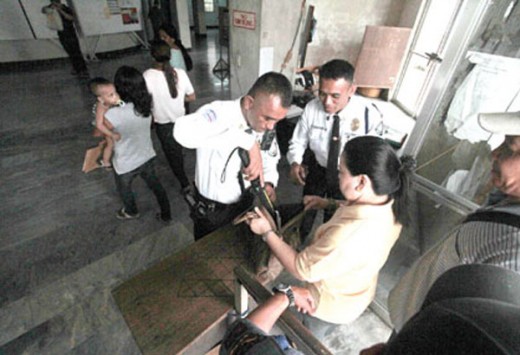
The normalizing of punishment translates, often, to interpersonal dynamics in which affront or insult is imbued with a need for response. Shaming, or somehow stigmatizing the offender is seen as personal empowerment. It is a society of vengeance, even small vengeance. Discursive frames now include a new grammar of punishment. If one has stuck to his job for years, he’s a ‘lifer’. And the capacity for delivering punishment is additionally seen as a positive attribute of identity. Condemnation and the exercise of even small authority is rarely questioned. Any small ritualized exercise of power….a supermarket security guard asking to look into your bag or purse is never questioned. The tacit accusation of these interactions is accepted. Guilt is, again, internalized— in the same way surveillance is accepted to keep “us” safe, so these invasions of person are accepted to “prevent crime”.
Innocence is lost.
There is an issue here, non existent in corporate news and media, of the actual real pain of punishment. That pain and punishment are linked is simply avoided as a topic. In Guantanmo Bay, forced feedings now occur daily, and yet the draconian severity of these procedures is rarely actually mentioned. That super max prisons are the most sadistic structures ever designed is at best a small side bar discussion in dialogues on incarceration.
The increasing indifference to the suffering of the surplus population is acute. Humans who do not ‘fit in’ are disposable. Take out the trash. This meme is repeated ad nauseum in popular culture. The binary *good guys* vs *bad guys* meme is a hallmark of TV cop shows. Human life if it is not white and respectable is devalued and reified. There was scarcely a complaint when food stamps were cut off to former offenders. And the reality is, as I’ve said before, when a black cop shoots a black teenager, its a white man’s crime. There is also here, a backdrop that has embraced a number crunching justification for identifying “high risk” populations. Or problem areas. The recourse to questions about this is always statistics. And this leads us back for a second to the University. This is the role of a research data compiling institution — and that means a sense of the world as reflected in statistical analysis. There is already an adjustment in societies behavior to adjust to numerical constructs. Don’t be in a problem population. Try to get out of the ghetto, or barrio, to a “better” life. “Ive arrived”…meaning I live in a middle class or wealthy enclave somewhere…where I won’t be counted in the wrong demographic. What one believes is of little consequence. Hence the dependency on degrees, titles, uniforms, and hierarchy. This also suggests a tidal change underway in how identity is defined. And, more, what autonomy means. What choice means.
As Michelle Brown points out, this new actuarial set of practices creates “a new and dangerous kind of social collectivity, one that is defined not by a deep sense of shared bonds or experiences but by exclusion.”
In the society of mass media and ever faster cycling of image and meme, shared experience has come to mean nothing. Everyone more or less shares the same thing (except that troubling surplus population) and it is by NOT sharing something that one is marked as deficient. And as outside.
There are global implications to all this, connecting up to the U.S. war machine, and its something I intend to address in part two of this.

Popular cultural narrative now includes a kitsch dystopian landscape that is ever more familiar. It also ties into the risk management model of social interaction (that Randy Martin writes about). The new protagonist/hero is often the management expert. The audience increasingly identifies with management, to the degree that actual engagement with the narrative is minimized and works are evaluated in terms of management or production.
Exclusion is the template for the internment camp. FEMA camps, or any variety of refugee holding facility. These are the spillage containers for the surplus population that don’t fit (yet) into penal institutions. But here again, we run into this new shifting of identity. The population must digest an ever more restrictive set of norms, an ever narrower notion of selfhood, and at the same time must navigate the demands presented in terms of what is success and what is failure. And then how to grasp the fluid notions of violence and one’s own implied guilt. As the crisis of capitalism increases, the state adjusts. Foreign policy is driven by war profit and control of resources. At home, it is driven by control. The domestic war zone landscape is one in which casualties are to be expected, and in which safety must be prioritized. Surveillance? Sure…if you have nothing to hide, you have nothing to fear. Except we are all guilty, so we all fear. And if we all fear, then a Darwinian logic of snitching is going to surface and already has. There is also an uncanny voyeuristic “we” that views mass police lock downs, or records events on cell phone cameras. While much of this is positive, and provides a record of police abuse (which seems, if this can even be possible, to be on the rise) but which also feels like the viewing of just another *screen* to watch the suffering usually seen on Jerry Springer or The Apprentice. For humiliation is now one clear outlet for bottled up resentments. Shaming and the transfer of one’s own internalized guilt onto another.

There has been a doubling down on masculine power, and on white domination. In cultural terms its evident in most Hollywood film and TV. It is also, however, evident in discursive terms on a personal level. The grammar of power is more indelible than ever. The hero travels through a war zone. Business is war, it’s dog eat dog. If you survive, you are a winner. (never mind who you stepped on to get there).
Last entry I discussed the neutralizing of cultural opposition in the arts. The eradication of the very idea of an avant garde. In the same sense one see the leveling of serious social critique and theory. This is not to say there are not good theorists and thinkers out there, because there are many. The problem is, though, that in the same way that a playwright or screenwriter is inherently compromised to a degree by working with institutional theatres or with studios, so political writers working within University structures and with University money, are going to find it hard not to ingest elements of these institutions — even if just structurally.

When you think in marketing terms, you are compromised.
But more than that, I continue to smell very reactionary positions in what are referred to as leftist.
Here is a quote from Andrew Lam, reprinted at In These Times:
“So is Snowden a hero or a traitor? On the one hand, by taking classified information that could harm the U.S. and then fleeing abroad—to Hong Kong, then Russia—he seems less heroic than self-preserving, especially for someone who says they want to bring about social change. (By contrast, whistle blower Daniel Ellsberg of Pentagon Papers fame stuck around and dealt with the consequences.) On the other hand, Snowden made Americans look at something from which we had learned to look away—internal government procedures to which we feel immune, until those procedures are spelled out in stark and dreadful terms, and we don’t like what we see.
Every generation needs to grapple with and find the balance between national security and civil liberties, now more than ever.”
Now, it seems to me that this is a highly reactionary position to take. But then the author, Andrew Lam is the son of General Lam Quang Thi of the former Republic of South Vietnam. So I guess its not so surprising after all.
This is, in a way, a somewhat disturbing trend. It’s marketing. Its the normalizing of identification with the state, while announcing your “brand” as leftist. The truth is, it is time to just retire the word “left” in political conversations.
I have to admit I had the same unnerving sensation listening to the taped speechs from IS conference.
(here…http://internationalsocialistnetwork.org/index.php/is-network/meetings/139-crisis-and-unity-where-next-for-the-left
So let me sort of try to bring this back to cultural production. The vast apparatus that is the culture industry has grown exponentially over the last decade or two, and before that is grew rather fast ever since the 1950s. Today in the Capitalist west it is the site of the most significant dynamics and relationships and social practices that people engage with.

Now if one takes Andrew Lam’s analysis on Snowden as an example, the first thing that comes to mind is the appeal to courage. This man “ran away”…and that he fled from a police state system in, I am sure, real fear for his life, is beside the point. It’s just not heroic. Iron Man wouldn’t do that. But here is where the analysis of cultural product, of narrative, becomes more complicated than is at first evident. That corporate narratives, the entertainment complex, is a field of semi organized social relationships and activities, and a form of labor, is an insanely big topic. So for now, I want to narrow it down just a bit to focus on this idea of punishment and the culture of control. Life in the West is enclosed within a filmic reality. Our language and our culture is now intertwined with film and TV and with the reality of the worlds they create. The audience identifies with a new set of protagonists whose authenticity and appeal lies in their sociopathic behavior. Tony Soprano, Dexter, and this year Ray Donavan. The list is endless, actually. What is interesting though, is to see the ideology of punishment as it exists in narratives not overtly about prison or the police. TV shows set in workplaces, or comedies set in institutions such as high school or college, or even in period pieces set in some ersatz past, all of them inhabit facsimile prisons, even if just metaphorical. Such is their creative entropy, their aesthetic exhaustion. The worlds created are worlds where the primary exchange is the coin of guilt. Increasingly there is no redemption, where once this was a staple of Hollywood melodrama, today the redemption is left unspoken…it may or may not be there.
Someone a while ago said its now impossible to make an anti-war film. And while I don’t know if that is strictly true, there is truth enough in that statement because of the inherent authority of the filmic image today. As soon a rifle appears on the screen (even if not thirty feet high anymore, but on a laptop, where the thirty feet are just shrunk down) there is a visual caress given to the weaponry. All films with guns is gun porn. At least on one level. As I never seem to tire of saying, all stories are crime stories. All narrative reproduce our own trauma and psychic formation. That doesn’t change the fact that guns are gun porn.
And that almost all crime film, all prison film, are simply second generation meditations on previous crime and prison film. In fact, I’m not sure a lot of prison life today hasn’t come to be adjusted in part to filmic versions. Such is the degree of interconnectedness this culture has with movies.
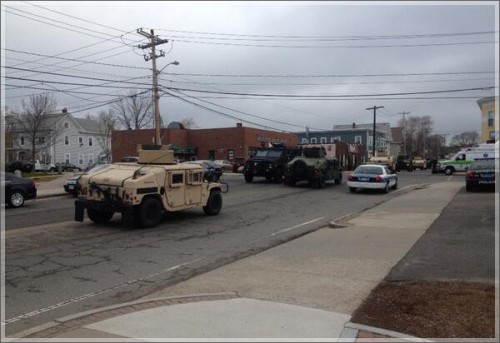
Almost all analysis of artworks, however, it seems to me, fail about at the same place. And this is because the society is now conjoined with media and it has caused a psychic fissure or wound from which bleeds the unconscious and libidinal connections to image and story. This is an ongoing topic for me, here, so I will return more to this in part two, there is a great deal more to say.
Greg Kaufman wrote this week…as a sort of addendum to all this….
…”one in 3 Americans lives within twice the poverty level…..and that level is starkly low at 18,000 dollars a year.
… the richest 400 people on the “Forbes” list made more from the stock market gains last year than the total amount of the food, housing and education budgets combined. I mean, the Walmart corporation made $17 billion last year, $17 billion.
You know, with some exceptions of people who are committed to telling the truth, we heard that this was about the deficit. But food stamps, over the next ten years, are projected to be 1.7 percent of federal spending according to the Congressional Budget Office. We heard this was about fraud, but less than one cent on the dollar of food stamp spending is lost to fraud, less than one cent on the dollar.
And we heard fraud from the chairwoman Senator Stabenow, Democratic chairwoman of the Senate Agriculture Committee. We heard a lot about this was, you know, rural districts versus urban districts and welfare on the back of farmers. But you know what? The truth is Food Research and Action Center has shown that the percentage of households in rural districts participating in food stamps is the same as the percentage of households in urban districts.”
This is part of the manufacture of “otherness”. Poverty, the surplus populace, the poor, are not worth feeding. They reside, psychically, in that shadowy hinterland that criminals, or terrorists, or “traitors” occupy. They are simply the material for which punishment exists. The raw material of punishment and domination.
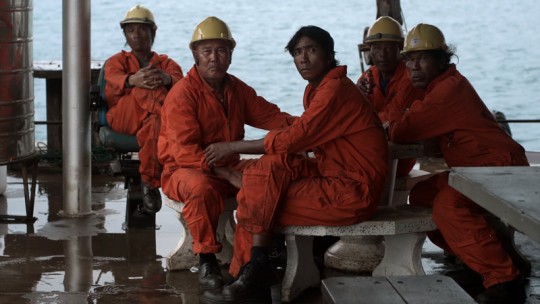

http://www.alternet.org/books/widespread-failure-intellectuals-stand-authoritarian-power-america?page=0%2C1
https://www.youtube.com/watch?feature=player_embedded&v=FfkZ1yri26s
http://beforeitsnews.com/alternative/2013/07/us-soldiers-deployed-in-penokee-hills-of-wisconsin-to-guard-future-worlds-largest-taconite-mine-2704586.html?utm_medium=facebook-share&utm_source=https%3A%2F%2Fwww.facebook.com%2F&utm_content=awesm-publisher&utm_term=http%3A%2F%2Fb4in.info%2FbA7f&utm_campaign